Perennial visitors to the New York State Fair treasure the picturesque Iroquois Village as a peaceful oasis of nature, beautifully shaded by the leaves of ancient trees.
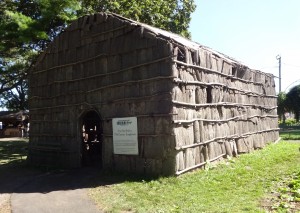 New York State–before it was New York State–was the homeland of the indigenous people who call themselves the Haudenosaunee (pronounced “ho DEN o SHAW nee”) which means “People of the Longhouse,” in their native language, a reference to the bark-covered shelter of their ancestors.
New York State–before it was New York State–was the homeland of the indigenous people who call themselves the Haudenosaunee (pronounced “ho DEN o SHAW nee”) which means “People of the Longhouse,” in their native language, a reference to the bark-covered shelter of their ancestors.
Longhouses were used as dwellings by the Iroquois people as recently as the 17th century. Growing families brought in-laws, children and grandchildren into the homes, which could be partitioned to allow each smaller family unit to have its own separate quarters. The buildings usually measured about 18 feet wide and from 40 to 200 feet long, although some were even larger. Beds made of saplings covered with a mat of cattails and deerskin often furnished the interior.
The cylindrical buildings were central to the culture and identity of the Iroquois as several family units within a common clan lived harmoniously in a longhouse, just as the Cayuga, Mohawk, Oneida, Onondaga, Seneca and Tuscarora nations lived side-by-side in peace on the confederacy’s hills and valleys. 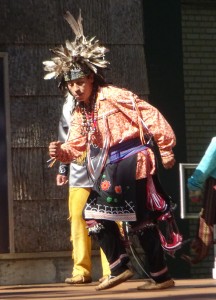
To illustrate the point, in 2000 Six Nations crafts people designed and constructed a replica of their traditional housing to commemorate the 75th year that visitors to the New York State Fair had been welcomed to the Iroquois Confederacy’s Indian Village. The traditional shelter of Six Nations families took its place as a fascinating display of authentic native history.
The building of the native structure that began with the turning of the rich soil, only a few hundred yards from the shore of the ancestral site now known as Onondaga Lake, is a process that holds tremendous significance in the heart of the Haudenosaunee people. After a crew of builders staked out ground under branches of a huge tree at the entrance to the grassy, park-like village, Six Nations Agricultural Society Superintendent Norman Jimerson presided over the ground breaking ceremony. A blessing in the native language was offered by Seneca elder Philip Thompson with Cayuga elder Stanley Buck at his side, both colorfully attired in customary shirts, feather headdresses and necklaces.
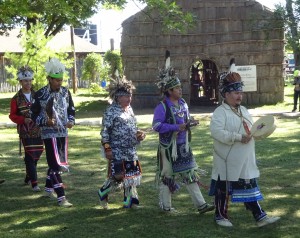 Jimerson then recognized the contributions of members of each of the six nations, singling out head builder and wood carver Larry Jones and Joe Cummins, the supplier of the elm bark that tradition dictates must cover the wooden structure, for words of appreciation.
Jimerson then recognized the contributions of members of each of the six nations, singling out head builder and wood carver Larry Jones and Joe Cummins, the supplier of the elm bark that tradition dictates must cover the wooden structure, for words of appreciation.
State Fair director Peter Cappuccilli, Jr. cited the close relationship between the Fair and the native people and praised the new addition as “a dream come true,” recounting how Six Nations representatives and Fair officials had extensively researched and cooperatively planned the project. The original longhouse had to be rebuilt for the start of the 2011 Fair after an off-season storm extensively damaged the structure. The second incarnation now stands for Fair visitors to enjoy, having undergone some repairs since last year.
It is now an essential contribution to the Fair by the indigenous inhabitants of our neighborhood. The Six Nations are the original custodians of this beautiful land and it wouldn’t be the Fair without them. 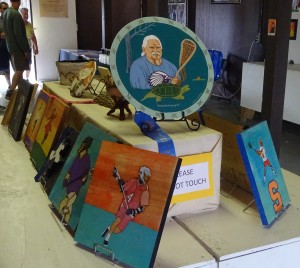 Every day (at 11 a.m., 4 and 7 p.m.), they present native dancers, festooned in colorful and finely-detailed costumes, performing historically-significant, traditional dances on the turtle mound stage.
Every day (at 11 a.m., 4 and 7 p.m.), they present native dancers, festooned in colorful and finely-detailed costumes, performing historically-significant, traditional dances on the turtle mound stage.
Often described as the oldest participatory democracy on Earth, the Haudenosaunee Confederacy’s system of government was a model for the American Constitution. What makes it stand out as unique to other systems around the world is its blending of law and values. For the Haudenosaunee, law, society and nature are equal partners and each plays an important role.
A trip to the New York Sate Fair can’t be considered complete without a visit to the revered Iroquois (Haudenosaunee) Village.
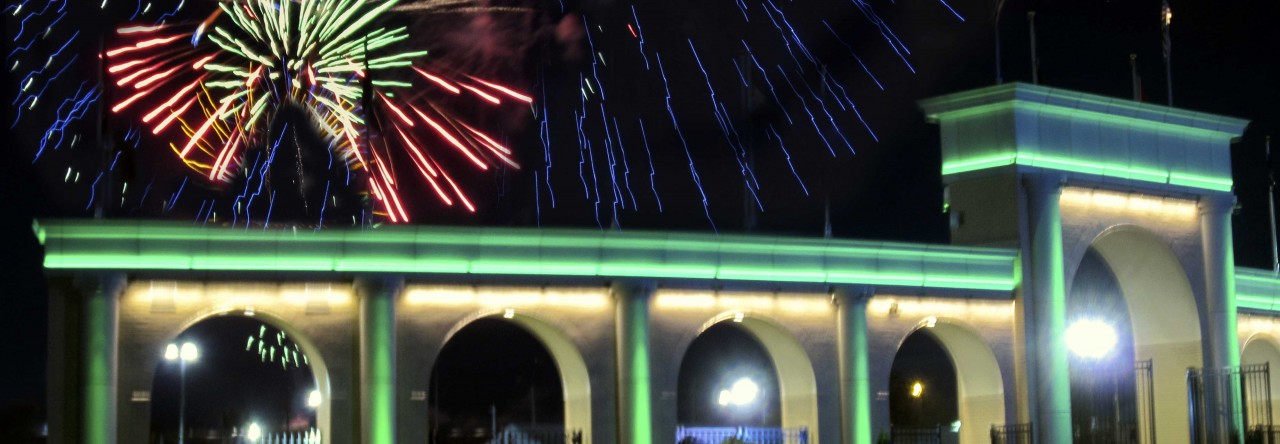
Leave a Reply